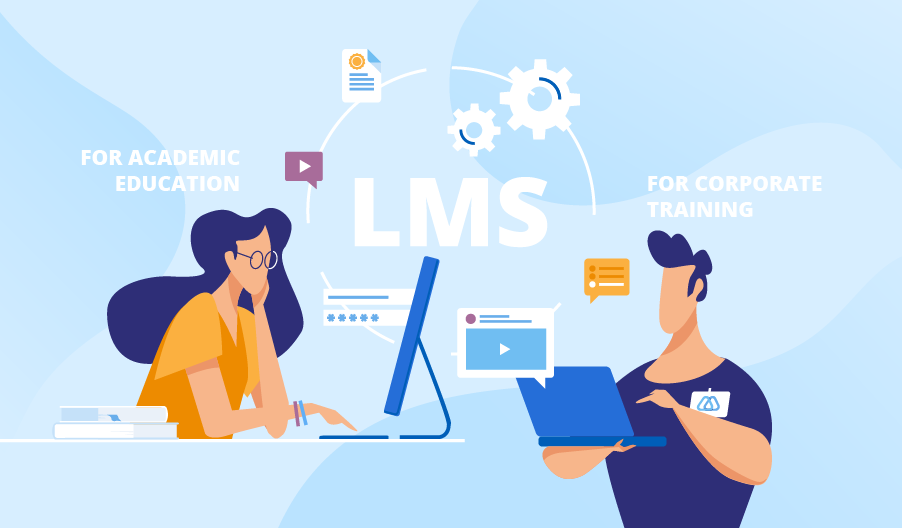Redesigning a website is the process of changing and updating the content, structure, format, and navigation of the site to improve performance, attract more traffic and increase the conversion rate of the audience to the customer. Some institutions and companies use a redesign to improve their brand image, and many make long-term investments in site redesign. Research shows that a brand needs multiple images to stay in the mind of the audience, and 80% of users say that the experience a brand provides is as important as the product or service it offers. Website redesign is a way to improve brand experience and plays an important role in increasing brand awareness.
Is it necessary to redesign the site?
Many people mistakenly think that website design can be done once and for all and have the best results. This is despite the fact that sites, like any other digital or physical product, have a specific lifespan, and their average useful life is between 1.5 and 2.5 years. Design trends and technology usually change during this period, and this makes a site lose its freshness and attractiveness after a while. Trends change and users prefer new and updated designs.
According to these cases, it can be said that the website redesign process is necessary if the goal is to attract more audiences. In many cases, especially in technology brands, this process is considered a permanent process, and long-term investment is made in website or application development. But the websites of offline businesses also become outdated after some time and the necessity of redesigning the site appears in them.

The main stages of a website redesign
Website redesign is a long and relatively complex process, the main steps of which are carried out with the help of online and digital analytical tools. The main stages of website redesign are introduced below.
Registration of current site performance statistics
Examining the performance statistics of the site clearly shows the necessity of redesigning the site or the proper functioning of the current design. According to statistics, the necessity and goals of site redesign may have different priorities. Below are some of the most important statistics and information that need to be evaluated monthly:
- Number of views, visitors, and number of new visitors
- drop rate
- Time on site
- Top performing keywords for ranking, traffic, and lead generation
- The number of linking domains and backlinks
- Brand new leads and form fill
- The total amount of sales
- All pages that attract traffic
The importance of some of this information can be determined more or less according to the website redesign goals in the evaluation. For example, total sales may not be important in the site redesign cycle until a site is operational. The same factor in an internet sales site can be the main reason for redesigning the site and trying to attract more customers.
Determining the goal of redesigning the site
The next key step in a website redesign is determining the purpose of this process. Goals are determined according to specific and statistical criteria and are tracked through online tools. Usually, the goals of the website redesign are one or more of the following:
- Increasing the number of visits and traffic
- Reducing drop rate
- Increasing time on site
- Improving the credibility of the site domain
- Raising brand new leads and filling out the form
- sales increase
- Improving ranking in search engine results
Brand definition and its message
It is better to have a clear definition of the brand, its message, and the unique value it provides before actually engaging with the site redesign. Anyone who lands on the site should immediately understand what the site does, what benefits it can have, and why they should stay on the site. Without having a clear and transparent definition of the brand, the stages of website redesign will not have the necessary coordination and integration.
Defining customer personas
Another point that needs to be taken into account in the redesign is that the website should be attractive to the visitor and the audience. Still, the misconception that a site needs to be about business is why many sites fail. Defining the customer persona in the redesign of the site helps to include the points that are key for the audience in the redesign.
Competitive market analysis
The next main step in a site redesign, which plays a significant role in the success of this process, is the analysis of the competitive market and the site’s share of visitors. There are various tools for this purpose, which are used to determine the competitors of a site in different fields and how they operate and attract customers.
At this stage, it is necessary to identify competing sites and check them more carefully. In this evaluation, various elements of competing sites, such as types of content, design, format, and structure, are examined from various aspects, and the appropriate solution is considered to attract the audience that shows interest in them.
Redesign and publish a new version of the site
Finally, it is time to implement the site redesign and publish the new version. This phase can take varying amounts of time depending on the number of changes and updates, and the team implementing the redesign. At this stage, all pages and content that have been successful before are improved and efforts are made to prepare content similar to them. In the same way, the weak points are removed and the features that the site lacked are added to it.

Tips for a website redesign
The main stages of a website redesign can have different priorities according to the goals of the redesign. In the following, we will share some tips for a website redesign.
Focus on analyzing user behavior
A successful website redesign is done with a detailed understanding of the target users and customers of the site. Therefore, the more time spent on analyzing the behavior of users on the site and competing sites, the better the result will be.
Purpose of the site redesign
Determining the goal of site redesign is a golden point in measuring the success of this process. At this stage, it is necessary to clearly define the goal of the redesign and move towards it.
Avoid paying too much attention to details
One of the common mistakes in a website redesign is to focus too much on details that may not be very important at this stage of site development. On the other hand, focusing on practical and applicable improvements in a limited time leads to much better results.
Spend time on home page design
The homepage is the first opportunity of a site to engage users, and a more professional and attractive design can improve the overall performance of the site. The main page of the site is like a quick access tool to the topic of activity, message, branding, and different parts of the site.
Working on responsive design
One of the golden tips that distinguish professional sites from amateur examples is responsive design for optimal display on various screens. Now, most of the users open the sites with mobile phones and tablets, and not having a responsive design means losing them.
Do not copy/paste old content
It is better for site managers not to have an emotional relationship with the content and old successful pages of the site and update them if needed. Updating the textual, image, and video content of the site is the golden key to the success of many large and reliable sites.
Focus on the branding message
The unique value of each business and site is presented to the audience in its message. Focusing on the branding message makes the website redesign process maintain its uniformity and coordination.
Publishing is not the end
The site redesign process in today’s world where technology advances at a high speed and is not done once and for all. this is a continuous process. After the publication and the evaluation of the results of the redesign and the strategies, improving is done in successive rounds of the site design.
How much does it cost to redesign the site?
According to the objectives of the redesign and the changes that are supposed to be included in it, the cost of redesigning the site can be different. In general, the use of dedicated graphics and visual elements, content production, programming, and research and marketing activities have costs that may be more or less in a website redesign project, depending on their level of professionalism and importance. The cost of redesigning the site in many sites, especially technology sites, and online stores, is part of the operating costs and the development team works on them.







Leave feedback about this
You must be logged in to post a comment.